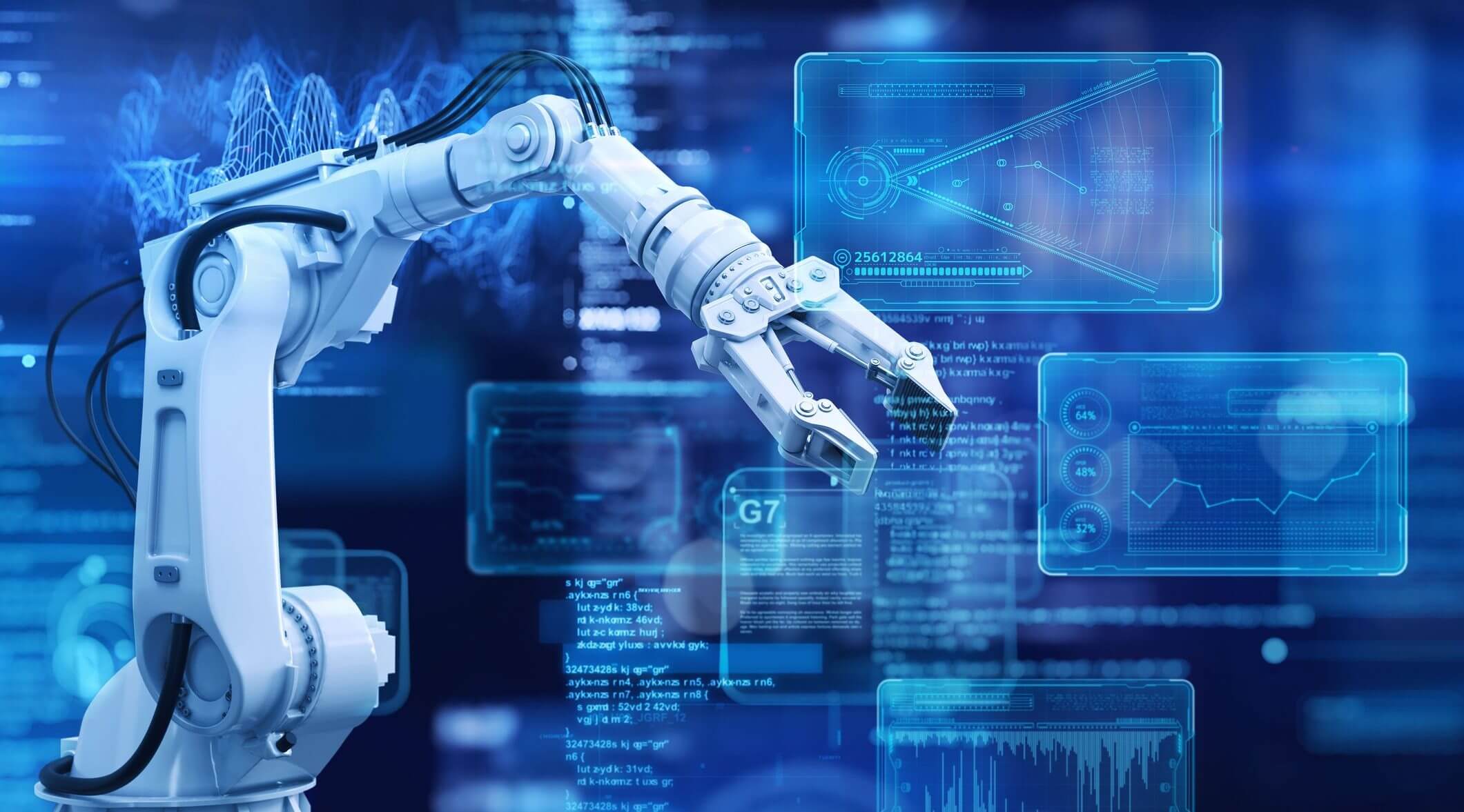Get access to a robot through a subscription? Pay only for the service it provides your business? Why not?
While the world has been enthralled with ChatGPT and the various other AI engines that have burst onto the market in recent months, the robotics industry – which also uses AI as a fundamental technology – has been going through its own revolution.
Robots-as-a-service, or RaaS, is not only going to put the robotics industry on fast forward, as more businesses can afford to invest in robots, but it will have reverberations down the value chain to the original equipment manufacturer (OEMs), and high-tech component manufacturers who will need to supply the microelectronics that are foundational to robotics products.
Dreaming of electric sheep…
Robots have been a part of our collective imagination for decades. From the Jetsons to the Terminator to the scarily lifelike “replicants” in Blade Runner, humans have always envisioned a future in which they would be served by mechanical workers.
And while we may not yet have flying cars, robots are already having a significant impact on our lives. They are increasingly a part of our day-to-day activities, from performing household chores to helping in manufacturing and logistics. Indeed, although they haven’t received a lot of publicity outside the specialist industry trade press, robots are transforming industries across the board, and their impact is only going to grow in coming years.
In a 2022 survey of 1,610 US and European companies by ABB Robotics, 75% of European and 62% of U.S. businesses said they are planning to invest in robotic automation in the next three years.
Industries where robotics has taken hold
Manufacturing has been a leader in robotics automation for decades. With robots, manufacturers can automate many of the repetitive and tedious tasks previously done by humans. This not only saves time but also reduces costs, eliminates errors and increases product quality, and improves workplace safety. Robots can work around the clock, they don’t call in sick, and don’t need breaks. What’s not to like?
Today, robots are also spreading through other industries, from logistics to healthcare and hospitality. In healthcare, they are performing surgery, monitoring patients, and even dispensing medication. This is particularly useful in areas where there is a shortage of healthcare workers or in situations where human workers are at risk of infection or injury.
In the logistics industry, robots can be used to move goods around warehouses and factories, pack products, and even deliver goods to customers. This has made logistics faster and more efficient, reducing delivery times and improving customer satisfaction.
In the near future, robots will become even more ubiquitous, performing tasks like mowing our lawns and cooking our food.
Cost as a major barrier to robotics adoption
One of the biggest roadblocks to robotics spreading more rapidly is its cost. Robots are expensive to buy and maintain, putting them out of reach of many small and medium-sized businesses. However, a new pricing model, RaaS, is changing this by moving robotics to a subscription model.
Yes, a subscription model, just like your Netflix subscription.
Companies like Graze Mowing and Miso Robotics offer RaaS services, which allow businesses to effectively “rent” robots instead of buying them outright. All maintenance costs are the responsibility of the vendor.
This makes robots more affordable for small and medium-sized businesses.
The RaaS model is similar to what has been done by Rolls Royce with its aircraft engines. Traditionally, an aircraft engine was just one of many parts in a plane, fast on its way to becoming a commodity. To fight that, Rolls Royce packed its airplane engines with sensors that deliver real-time data and analytics for improving performance and safety. The company collects metrics while planes are in transit. This data is analyzed instantly, and any concerns are communicated to the appropriate airline before the plane reaches its destination.
RaaS, like selling airplane engine performance metrics as a subscription, is all about encouraging sales by eliminating upfront costs for the customers. No longer do Rolls Royce airline customers have to invest in data collection and analysis tools – with all the hardware, networking, software, and workforce hours that go with it. They just get the information they need.
Likewise, one of the main advantages of RaaS is that it allows businesses to avoid the rather exorbitant upfront costs of purchasing a robot outright. Instead, they pay a monthly fee for the use of the robot, which includes maintenance and support. This also transforms the cost of a robot from a capital expense (CapEx) into an operational expense (OpEx) which helps considerably with cash flow and company valuation.
It’s important to note that RaaS is not the same as a rental. With rental, businesses pay for the use of a piece of equipment for a specific period, and then return it. With RaaS, businesses subscribe to a service that provides ongoing access to a robot – not necessarily the same robot. In fact, RaaS robotics suppliers might periodically upgrade or swap out the model in use for a newer model. It’s one of the advantages of RaaS over renting that businesses always have the latest and greatest robotics technology.
Component and OEM manufacturers, take note
The rise of RaaS has big implications for component and OEM manufacturing. As more robotics companies adopt this pricing model, there will be a steady and consistent demand for the microelectronics that are the basic building blocks of robots. This will require component manufacturers to adjust their supply availability and pricing models to meet the needs of this new market.
Some of the ways that the shift to RaaS could affect them include:
- Changes in revenue models: The RaaS model shifts the revenue stream from one-time sales of robots to ongoing subscription-based models. This could impact the business models of OEMs and high-tech component manufacturers, as they may need to adapt to these new revenue models to remain competitive.
- Increased demand for certain components: With the RaaS model, the robots themselves may be leased or rented, but the supporting components will need to be purchased. This could lead to increased demand for certain high-tech components such as sensors, processors, and other components that enable the functionality of the robot.
- Increased competition: As the RaaS model becomes more prevalent, new players may enter the market, including companies that specialize in providing RaaS services rather than manufacturing robots or components. This could increase competition for OEMs and high-tech component manufacturers, requiring them to differentiate their offerings and innovate to remain competitive.
- New business opportunities: The shift to the RaaS model could also create new business opportunities for OEMs and high-tech component manufacturers. For example, they may be able to offer value-added services such as maintenance, repair, and customization of robots leased through RaaS providers.
- Changes in supply chain dynamics: The shift to RaaS could also impact the supply chain dynamics in the robotics industry. As more companies move to the RaaS model, the supply chain may shift towards more flexible and agile production methods, which could impact traditional manufacturing and distribution models.
Looking ahead: OEMs and high-tech component manufacturers should start preparing
The shift to the RaaS model in the robotics industry is likely to have significant implications for OEMs and high-tech component manufacturers. While the exact nature of these implications will depend on a variety of factors – including the specific industry and market dynamics – it is clear that the move to RaaS will require companies to adapt to new business models and new ways of working in order to remain competitive.
Indeed, component manufacturers should consider reevaluating their pricing models and sales strategies today. For example, instead of selling components outright, manufacturers may want to consider offering their products as part of a service contract. This will allow them to capture ongoing revenue streams and ensure consistent demand for their products.
This pricing model has already been successful in other industries, and it’s now transforming the way businesses think about capital equipment. As the demand for RaaS increases, component and OEM manufacturers will need to adjust their supply availability and pricing models to meet the needs of this new market. High-tech manufacturers that are proactive in their approach to pricing and sales strategies will be better positioned to capitalize on this exciting trend.
In business it is imperative to continuously learn and adapt. To learn more about how you can evolve your business strategies today to capture the most market value, reach out to schedule time with one of our revenue optimization and compliance experts.
















